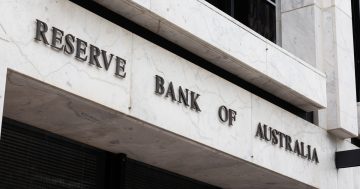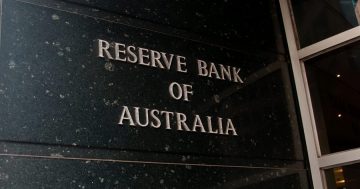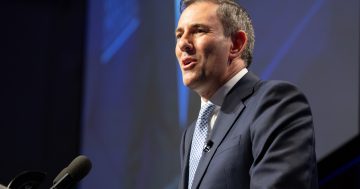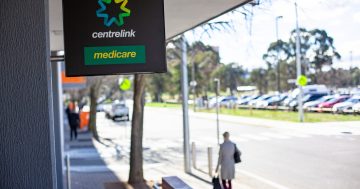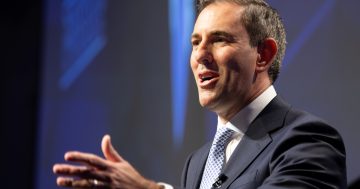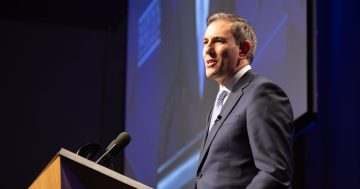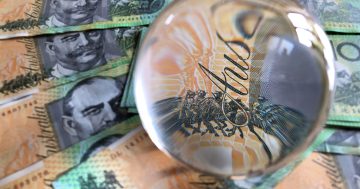Michael Janda and Rhiana Whitson* discuss the Reserve Bank of Australia’s (RBA) most recent interest rate rise.
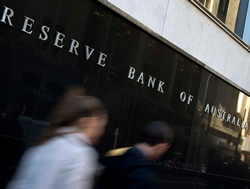 The Reserve Bank has raised interest rates by 0.5 of a percentage point, taking its cash rate target to 2.35 per cent.
The Reserve Bank has raised interest rates by 0.5 of a percentage point, taking its cash rate target to 2.35 per cent.
According to analysis by RateCity, the latest increase will add a further $216 a month to a $750,000 mortgage.
The total increase in monthly repayments on a $750,000 mortgage balance will be $922 since the RBA started lifting the cash rate from its record low of 0.1 per cent in May.
Australia’s central bank has now raised interest rates for five months in a row in its most aggressive rate rises since 1994, when it lifted the cash rate from 4.75 per cent to 7.5 per cent in just five months.
The cash rate of 2.35 per cent is also now at its highest level since the beginning of 2015.
RBA governor Philip Lowe’s post-meeting statement again reiterates that the bank’s board is “committed to doing what is necessary” to bring inflation back within the bank’s 2-3 per cent target range “over time”.
“The board expects to increase interest rates further over the months ahead, but it is not on a pre-set path.
“The size and timing of future interest rate increases will be guided by the incoming data and the board’s assessment of the outlook for inflation and the labour market.”
‘Narrow path clouded in uncertainty’
However, there are also some tentative indications the bank may start slowing the pace of rate rises from next month on.
For the first time, Mr Lowe acknowledged that most borrowers had yet to feel the full effects of the rate rises the RBA had already implemented.
He also noted the recent slump in consumer confidence and house prices amid rising rates and a surging cost of living.
However, Mr Lowe also noted that many households had large financial buffers, while saying that most people were having little trouble finding work or picking up extra hours and many were getting large pay rises.
With Russia’s invasion of Ukraine and reduction in gas supplies to Europe, as well as China’s ongoing COVID-19 lockdowns, Mr Lowe acknowledged it was hard to know how far rates would have to rise to contain inflation without tanking the economy.
“The path to achieving this balance is a narrow one and clouded in uncertainty, not least because of global developments,” he observed.
Some borrowers tighten belts
Danial Khan and his partner bought their first home in Sydney’s outer-west in January 2021, when rates were at rock-bottom levels and the property market was strong.
Their mortgage repayments have since gone up from just under 3 per cent to almost 5 per cent.
“The monthly repayments have been quite substantial since the [rate] jump,” Mr Khan said.
“We’ve just done a whole revamp of our expenses, making sure we’re not spending on unnecessary things.”
That has meant ditching some streaming services and other subscriptions, but Mr Khan is now turning his mind to other ways the couple can save money.
“I understand that interest rates going up are because they want to manage the economy well, but increasing them quite a lot might cause a lot of people to have major lifestyle changes,” he said.
“The interest rates might increase to help the economy, but I would ask at what cost?”
However, a survey of more than 2,600 people by financial comparison service Canstar found a significant split between those struggling with rate rises and those unaffected.
While around a quarter of people said they might have to cut back their spending in order to cope with rising interest rates, 44 per cent said they would experience no change to their financial position.
A further 15 per cent said they would benefit from rising rates, either through increased returns on their savings, falling home prices or a combination of both.
ABS figures show only 37 per cent of households have a mortgage, with 30 per cent owning their home mortgage-free and the remainder renting.
Amongst those who have a mortgage, RBA research ahead of its first rate rise showed that 40 per cent would have no increase in their minimum repayments with 2 percentage points of rate rises — although there have already been 2.25 percentage points of rate hikes since then.
Will interest rate rises slow down now?
UBS economist George Tharenou interpreted Mr Lowe’s statement as an indication that rate rises might slow from here.
“We still expect the RBA to slow down the pace of rate hikes to 25 basis points [0.25 of a percentage point] per meeting, and peak at 2.85 per cent in November 2022,” he said, but added that, “risks remain to the upside”.
However, there are still more economists suggesting that this balance involves a cash rate starting with “3” than those who expect official interest rates to peak below that level.
“I think it’s probably more likely to move towards 3 [per cent],” EY Oceania’s chief economist Cherelle Murphy told The Business.
“Anything below that is probably still on the low side historically and, with an economy that’s still running fairly strongly, that may not be enough to take things down.”
Financial markets are split between a 0.25 or 0.5 percentage point increase next month.
But market pricing currently suggests a peak cash rate of 3.8 per cent by mid-2023, implying a further 1.45 percentage points of rate rises between now and then.
The RBA governor will be giving more detail on his current thinking when he fronts a business economists lunch on Thursday.
*Michael Janda has been the ABC’s Online Business Reporter since 2009. Rhiana Whitson is a reporter with the ABC’s national business unit in Melbourne.
This article first appeared at abc.net.au.


